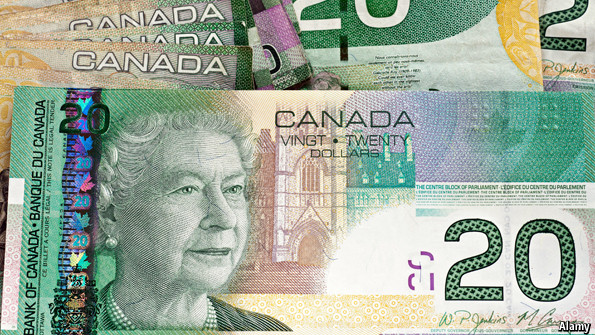
ON May 18th Prince Charles and his wife, the Duchess of Cornwall, started a four-day tour of Canada, a country where his mother is still head of state and where one day—if all goes to plan—he will be king. Yet the British monarchy is not terribly popular in Canada, a former colony. A poll from last year indicated just over half of respondents would prefer a Canadian head of state. Why does the Queen still reign there?
English, French and British kings and queens have reigned over bits of what would eventually become Canada since the 16th century, when the first European explorers planted flags on the shores of what they believed was Asia. When Canada took its first big step towards independence in 1867, uniting disparate provinces under the dominion of Canada, the chief architects of the plan were adamant that the British sovereign would head the government they had modelled on the Westminster system. Among other things, this was thought to mark them out from the "godless republicans" in the south. Canadians opted again to retain the British monarchy in 1931 when the statute of Westminster formally recognised the independence of Canada, Australia, New Zealand, South Africa, the Irish Free State and Newfoundland (which joined Canada in 1949). At her coronation in 1953, Queen Elizabeth became not just the British sovereign but also Queen of Canada, Queen of Australia, and so on down through the 16 realms to Queen of Tuvalu.
This explains why her face is on the $20 bill and the coinage (a diminishing amount after Canada stopped minting pennies last year), why new Canadian citizens swear an oath to the Queen and why each new session of parliament begins with a speech from the throne. Usually the throne’s occupant is the governor general, or in the case of the provincial legislatures one of 10 lieutenants general, who collectively are the Queen’s representatives in Canada. They largely hold a ceremonial role, but over-reaching politicians ignore them at their peril. Gordon Moore, the head of the largest group for veterans in Canada, kicked up a fuss when Stephen Harper, the prime minister, said he would be accepting the flag flown by the troops in Afghanistan at a veterans ceremony on May 9th. Mr Moore pointed out that the governor general was technically the commander-in-chief; the agenda was subsequently altered so that Mr Harper then handed the flag to the Queen’s representative. Such a misstep is out of character for the Conservative government, which has made much of Canada’s royal connection, in part to distinguish itself from previous Liberal administrations that replaced the Red Ensign, which had a union jack in one corner, with the red-and-white maple-leaf flag. Mr Harper has even recently reinstated the word "royal" in the Royal Canadian Navy and Royal Canadian Air Force. John Baird, the foreign minister, caused minor outrage (particularly among contemporary artists) when he replaced a mural by Alfred Pellan, an artist from Quebec, which had been in his foyer for 20 years with a portrait of the Queen.
As a result it seems unlikely the current government would contemplate removing the Queen as head of state. And without a greater swell of anti-monarchist feeling, future governments will also be put off by the lengthy and messy constitutional negotiations required for such a change. Prince Charles and the Duchess could rest easy as they celebrated the Queen’s official birthday in Canada on May 19th. Canadians have happily taken a day off work for this holiday since 1845. A few still do so out of royalist sentiment. But many more see it as the official start of summer.
Dig
deeper:
How continental pragmatism and management theory could
help the monarchy (July
2013)
Why Canada has killed off the penny (Feb 2013)
What three royal jubilees says about Britain (May 2012)